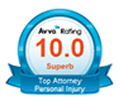The streets in our neighborhoods should be safe places for adults and children to walk. But many people face traffic dangers just because they’re walking to school or to the park. Drivers, parents and kids can all do their part to help keep our streets safe for pedestrians. Below are some resources to help you keep safe.
Parents are the most important models of proper pedestrian behavior for children.
- Cross streets safely. Cross at a corner, using traffic signals and crosswalks. Try to make eye contact with drivers before crossing in front of them. Do not assume that because you can see the driver, the driver can see you.
- Look left, right and left again when crossing, and keep looking as you cross. Walk, do not run, across the street.
- Walk on sidewalks or paths. If there are no sidewalks, walk facing traffic as far to the left as possible.
- Be a safe pedestrian around cars. Watch for cars that are turning or backing up.
- Parents and kids should hold hands in parking lots.
Set pedestrian safety rules for your children.
- Never allow children under age 10 to cross streets alone. Adult supervision is essential until you are sure a child has good traffic skills and judgment.
- Children should walk on direct routes with the fewest street crossings.
- Make sure children know to cross 10 feet in front of a school bus, never behind, and to wait for adults on the same side of the street as the school bus loading or unloading zone.
- Teach your child never to run out into a street for a ball, a pet or any other reason.
Help create an environment that’s safe for pedestrians.
- Make sure your child plays in safe places away from motor vehicles, such as yards, parks and playgrounds and never in the street. Fence off play areas from driveways and streets.
- Buy clothing and accessories incorporating retro reflective materials for your family to wear at dawn and dusk, in the evening and during other low-light situations, such as rainy or foggy weather.
- Check frequently for children when backing out of a driveway or a parking space.
Downloads
- High-Risk Child Pedestrians (October 2006)
- Motorist Behavior at Stop Signs in School Zones and Residential Areas (October 2003)
- Physical Environment and Motorist Behavior at Intersections in School Zones (October 2004)



















